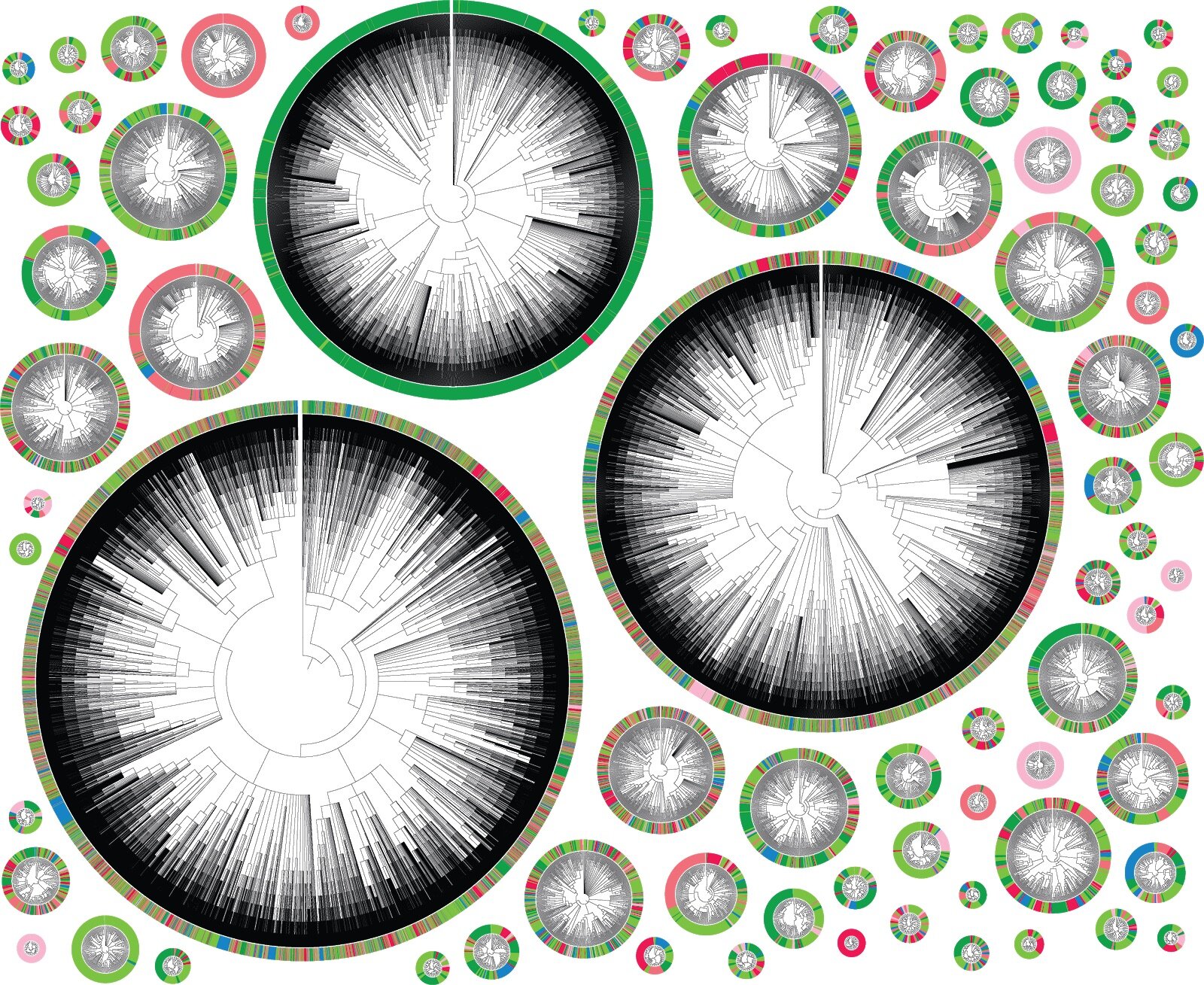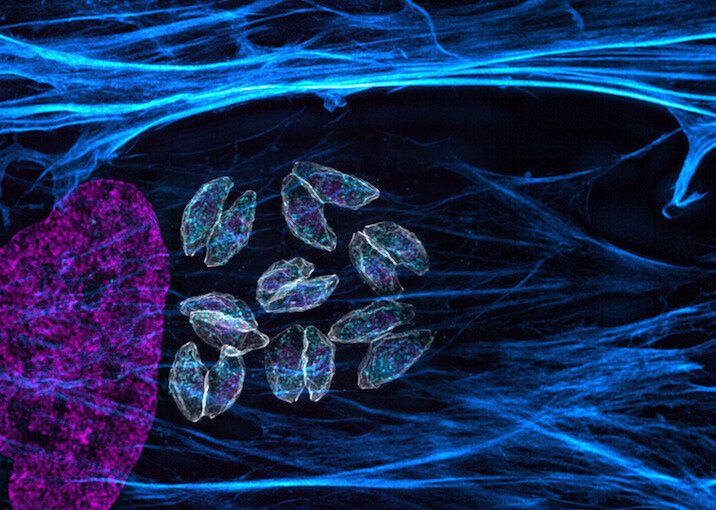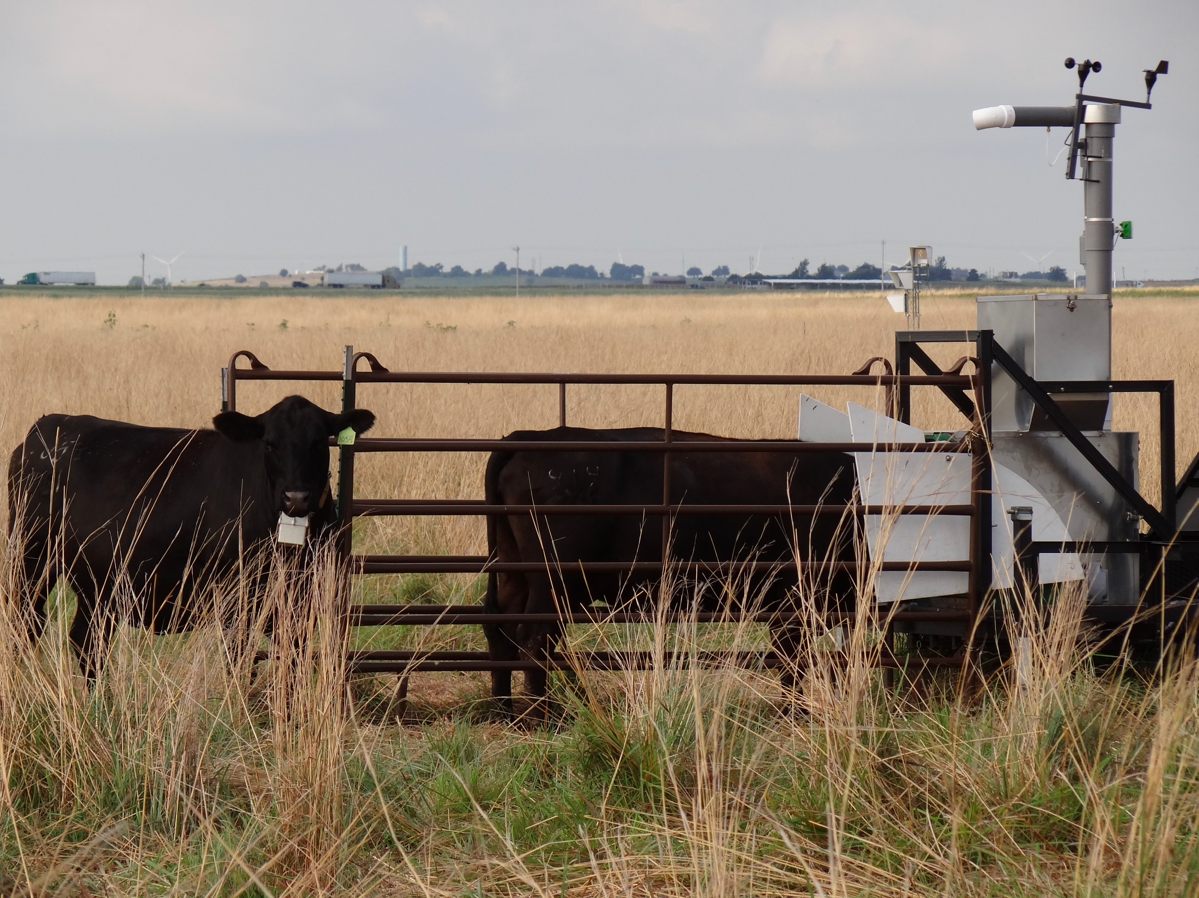Recent Work
A selection of stories and projects I have written or worked on for magazines, newspapers, and as part of my graduate degree program.
For a complete list of stories I’ve written for Science Magazine, click here.
Bison Death Plunge
Published in Texas Parks & Wildlife magazine, November 2023
‘Amazing’ archeological discovery at Caprock Canyons State Park reveals a place where Native Americans drove bison off a cliff.
Catching cancer in the act
Published in MIT News, January 2021
Using CRISPR technology, researchers are tracking the lineage of individual cancer cells as they proliferate and metastasize in real-time.
Snake sex chromosomes say less about sex and more about survival
Published on the Whitehead Institute website, January 2021
Sex-specific chromosomes are a dangerous place to be, if you’re a gene. Because these chromosomes — Y chromosomes, in humans — do not have a matching chromosome with which to exchange genetic information, they are prone to losing non-essential genes left and right in a process called genetic decay. Now, a new study from research scientist Daniel Winston Bellott looks to snakes to broaden our understanding of what makes a gene able to survive on a sex-specific chromosome.
From bedside to bench, and back again
Published on the Whitehead Institute website, April 2020.
A mysterious case in the clinic led Whitehead Institute researchers to discover a new genetic lung condition.
These genes help explain how malaria parasites survive treatment with common drug
Published on MIT Biology website, September 2020.
The essential malaria drug artemisinin acts like a “ticking time bomb” in parasite cells — but in the half a century since the drug was introduced, malaria-causing parasites have slowly grown less and less susceptible to the treatment, threatening attempts at global control over the disease.
Predicting Three Mile Island: A controversial report, an MIT professor, and the most publicized nuclear disaster in US history
Published in MIT Technology Review, April 2019.
For many, the widely publicized incident at Three Mile Island in 1979 was a wake-up call about the potential dangers of nuclear power. The disaster shook the industry to its core, but Norman Rasmussen, PhD ’56, a professor in the Department of Nuclear Engineering at MIT, had warned four years earlier of the danger of a very similar scenario.
Lisa Margonelli, Author of ‘Underbug,’ Talks Termites, Technology, and When to Write Weird
Written for the Knight Science Journalism Fellowship website, March 2019.
Lisa Margonelli began her talk the way any termite aficionado might: with a photo of a pale, bloated queen. Around the oversized insect, worker termites scurried industriously. “They’re carrying the eggs away from the end of her,” Margonelli said, as she spoke to Knight Science Journalism fellows in March. “She’s got six little legs up there, but she can’t really move.”
Coastal Icon: Jeff George
Published in Spring 2019 issue of Texas Shores Magazine (page 19 of PDF).
THE FIRST TIME Jeff George stepped into Sea Turtle Inc. in 1992, he was greeted by a flirty, whitehaired, ex-pilot named Ila Fox Loetscher — the Turtle Lady of South Padre Island herself. She ushered in George, a retired executive with his two children in tow.
“It’s in an old house,” he says. “You go outside, and there are five little concrete tanks out there, basically 4 feet by 8 feet and only about 3 feet deep. And then there are two steps and a little stage, and this lady comes out and puts costumes on turtles and talks about the Kemp’s ridley, an endangered species, for two hours a week. And now we’re here.”
Catching Oklahoma’s Tiny Tremors in the Act
Published in Eos, December 2018
Scientists map thousands of microearthquakes in Oklahoma to take a closer look at the seismic effects of wastewater injection following oil and gas operations.
Student group helps blind boater sail independently
Published in MIT News, December 2018
Four seniors in the Principles and Practices of Assistive Technology program designed an audible device to help an MIT employee navigate on the water.
Flora Fact: Out on a Limb
Published in Texas Parks & Wildlife Magazine, December 2018
Examine the twisting branches of live oaks (and a host of other trees) around Texas, and you’ll see one of the state’s most maligned plants: spiky-looking, dull-green ball moss.
Holiday by the Sea: Galveston, Texas
Published in Texas Parks & Wildlife Magazine, December 2018
I watch calm blue-green water flash by outside the windows of my car as I drive Interstate 45 across Galveston Bay, windows down to inhale the coastal breeze. Seabirds glide overhead, and the shore is barely visible in the distance, its crown of vegetation contrasting with the light sky. It feels as if we’re adrift in a state of limbo.
Scientists breathalyze cows to measure methane emissions
Published in GeoSpace, December 2018
Cattle burps are the number two source of methane in the U.S., but it’s tricky to measure exactly how much methane one cow produces in a day. That’s why researchers at the USDA-ARS Conservation and Production Research Laboratory in Bushland, Texas set out to use a number of different methane assessment methods — including a “breathalyzer for cows” — to determine the methane emissions of free-range cattle on Oklahoma grasslands.
Meet Boston’s modern-day Johnny Appleseed
Produced for podcasting workshop in MIT’s science writing seminar, November 2018
Russ Cohen has been foraging for wild edible plants for years. He knows all the best spots to find shagbark hickory trees, black birch trees, and even wild strawberries, and he has delicious recipes for all sorts of natural delicacies. He often shares this special knowledge by leading foraging walks or giving presentations, but in 2013, Cohen decided to go a step further: he started his own nursery of native edibles, which he then plants around the Boston area for others to enjoy.
Dog Town
Published in Texas Parks & Wildlife Magazine, December 2018
An intrepid cowboy riding across the Texas Panhandle in the early 1900s might have encountered a town nearly 200 times the size of Houston, sprawling over 25,000 square miles of short-grass prairie. Its 400 million residents were short and brown- haired, and kissed each other on the face by way of greeting. They chattered together until the sun sank below the horizon, and ran around town surprisingly fast, given their short legs and round pot bellies.
Looking back at Project Athena
Published in MIT News, November 2018
A revolutionary educational project in the 1980s put the tools of computation in students’ hands — and foreshadowed even greater changes.
Wild Thing: Meet the Beetles
Published in Texas Parks & Wildlife Magazine, December 2018
Kern's flower scarab lives up to its name as it snuggles within the glossy cups of cactus flowers in what appears to be a perpetual state of bliss. These beetles are members of the scarab family, and their bodies, like those of many scarabs, are shaped like rounded rectangles with sturdy, textured wing casings.
Prairie Protector: Trevor Burke
Published in Wildflower Magazine, November 2018, as part of a series on young conservationists called “The Go-Getters”
When Trevor Burke was 12 years old, he asked his mom a question no mother is ever ready for: “Mom, can I raise 300 bobwhite quail in your living room?”
More surprising than his question, was her answer: yes.
Wildflower Wonder: Zylia Kleinfeldt
Published in Wildflower Magazine, November 2018, as part of a series on young conservationists called “The Go-Getters”
Zylia Kleinfeldt’s first name means “of the forest” — a fitting description for a girl who has worked hard to raise awareness for the wildflowers of her home state, Wisconsin.
At age 11, Kleinfeldt has not only created a petition to change Wisconsin’s state flower in order to protect and publicize a threatened species, but she has also written and illustrated her own book.
Wild Thing: Sight Unseen
Published in Texas Parks & Wildlife Magazine, November 2018
The Texas blind snake is small — between 3 and 13 inches in length — and at first glance is almost indistinguishable from an earthworm. Its mouth is so tiny that it cannot bite humans; its only defense is poking the tip of its tail into its captor. Finally, if you needed further proof of its harmless cuteness, the snake’s Latin name, dulcis, means “sweet.”
"Hey,Charlie" app supports those struggling with opioids
Published in MIT News, October 2018
Smartphone app developed by Emily Lindemer PhD '17 uses social contacts and location information to give gentle reminders for staying engaged with recovery.
Flora Fact: Plum Wild
Published in Texas Parks & Wildlife Magazine, September 2018
On many sweltering afternoons as I was growing up, my dad and I could be found standing waist-deep in roadside thickets, scratching up our arms as we reached into the bushes for the glowing ornaments of midsummer: sand plums.
Wild Thing: Blue Moon
Published in Texas Parks & Wildlife Magazine, September 2018
From their phoenix-like regeneration ability to their inscrutable species identity, ethereal Gulf of Mexico moon jellies hide mystery within their translucent bodies.
Wild Thing: Tickled Pink
Published in Texas Parks & Wildlife Magazine, June 2018
When the roseate spoonbill, Texas’ pinkest water bird, forages for food, it uses its bill like a pair of tongs grabbing hot dogs off a grill. Pacing and foraging the muddy shallow-water shores, it moves a slightly open bill back and forth, feeling for prey with special touch receptors on the paddle-shaped end. Once it encounters an unlucky fish, crab or shrimp, the roseate spoonbill snaps it up.
Flora Fact: Going Green
Published in Texas Parks & Wildlife Magazine, April 2018
When rain stops, paloverde trees drop their leaves and photosynthesize through their bark.
Wild Thing: At the Hop
Published in Texas Parks & Wildlife Magazine, January 2018
A slight movement, a quiver and a flash of white tail — catching the mad dash of an eastern cottontail rabbit in our pasture was one of my favorite sights when waking up early for school in North Central Texas. Even today, I still feel a thrill when I see the dark eyes and stock-still body of a cottontail watching me from out of the brush.
Bird behavior may help solve human problems
Published on the National Association of Science Writers website, February 2018.
AUSTIN, Texas — Bird behavior gives clues that can help solve human social, economic and health-related problems. Pigeon studies, for example, could aid the development of low-cost, reliable tests for environmental toxins, and research using zebra finches could provide strategies for preventing wildlife-related damage to agricultural and aviation assets.
Healing Land with Livestock
Published in Texas Parks & Wildlife Magazine, January 2018
When Casey Wade stepped onto the high desert grassland of Mimms Ranch in West Texas, he found the ground as hard as asphalt and dusty beneath his boots. The land was balding, its carpet of greenish-blond grass receding, leaving parched bare patches sprinkled across the rolling desert plains.
“The land was so dry,” says Wade, the vice president of ranching operations for the Dixon Water Foundation. “There were large patches of bare ground, and it just baked in the sun – it became like concrete with a hard crust on it, and nothing grew.”
From ScienceWriters: Inaugural SciComm South Conference
This article was published in Science Writers Magazine in January of 2018.
On Jan. 13, nearly 100 science communicators packed into Huston-Tillotson University's science building, in Austin, Tex., for the first-ever SciComm South Conference; an afternoon of networking, learning, and fun.
Hailing mostly from Texas, attendees performed science-based improv, discussed techniques for pitching stories, and formed new connections with colleagues from the region.
Biologists seek assistance from anglers in tracking American Eel in Texas waterways
Published on the Texas Parks and Wildlife Department website, August 2017.
AUSTIN — Every now and then, anglers fishing Texas waterways may reel in something unexpected: the slimy, secretive American Eel.
“[The American Eel] is just such a unique species that you don’t see that often, and so when you catch one or you see one, you remember it,” said Texas Parks and Wildlife Department (TPWD) aquatic biologist Stephen Curtis. “It’s going to leave an impression."
Texas receives funding to combat white-nose syndrome in bats
Published on the Texas Parks and Wildlife Department website, July 2017.
AUSTIN – The Texas Parks and Wildlife Department (TPWD) will receive $30,000 in grant funding from the U.S. Fish and Wildlife Service (FWS) to research and combat white-nose syndrome, a deadly disease affecting bats across North America.
Hurricane Invasion
Invasive plants may take root in Harvey’s wake
Cliff Tyllick stands by a dead tree, looking up at its bare branches with an expression that is part pity, part indignation.
“See this oak?” He motions to the gnarled trunk, placing a hand on its peeling bark. “This died of thirst because of that ligustrum.”
We turn our faces skyward to see a dark canopy of leaves shining smugly overhead: this is the offending ligustrum. The sight of the tall, shady plant, also known as the glossy privet tree, seems to almost cause Tyllick physical pain. As if this tree were growing not on the hard-packed soil of Austin's Walnut Creek Metropolitan Park, but under Tyllick’s own skin.
































